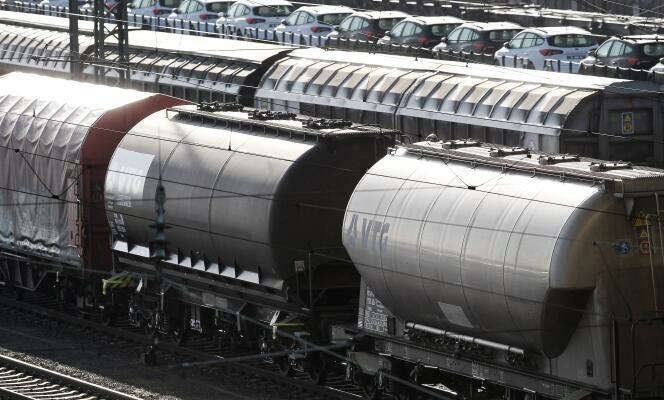“Mannheim is the first marshalling yard in Europe”, recalls Alain Krakovitch, director of TGV and Intercités at SNCF Voyageurs. He knew it well when he was a young project manager and worked on the link between Woippy (Moselle), a freight center, and its German equivalent.
Today, freight wagons are still being reorganized there, as well as night-time trains. “We are going to do an X maneuver”, explains this expert. The Berlin-Paris arrives at this station around 3:15 a.m. In reality, it is a Berlin-Brussels-Paris: a train made up of two “coupons” (two groups of cars), one which has Paris as its terminus , and the other, Brussels.
In Mannheim, another train joins him: the Vienna-Brussels-Paris, also made up of two coupons. The locomotive arriving from Berlin advances on a platform towing the coupon for Belgium. The cars which must go to France are detached and a French locomotive, driven by a driver from the TER team from Sarreguemines (Moselle), comes to pick them up. They will be brought to another track and attached to a French locomotive. Cars coming from Vienna going to Paris are also hung there. Two trains then leave, one towards Brussels, the other towards France, each with travelers coming from both Berlin and Vienna.
The French locomotive is special: there are only five in the world, approved to run in both Germany and France, which still have different regulations, when towing passengers. We are far from high speed: it travels at the fastest 140 kilometers per hour (on a network where it could go at 160 kilometers per hour). “It is for this reason that between Berlin and Mannheim we use German traction, which can go up to 200 kilometers per hour, explains Erwin Kastberger, in charge of international trains at the Austrian Federal Railways (ÖBB). We are talking with a company specializing in the rental of railway equipment to ultimately have a locomotive that makes the entire journey. » But, in rail, the unit of time is, in the best case, the five-year period… and more often the decade. The first of thirty-three Viaggio trainsets ordered in part in 2018 by ÖBB from Siemens and manufactured near Vienna has just been put into service, and the others will be gradually delivered over the next five to six years.
Inconvenient schedule
These X maneuvers are standard practice for ÖBB Nightjet (the name of ÖBB night trains). There are two more every night, to transport passengers coming from Vienna and Innsbruck (Austria) to Hamburg (Germany) or Amsterdam, or to bring those from Vienna and Munich (Germany) to Rome, La Spezia or Milan (Italy). “We have to do it because of the lack of material, but also for economic reasons”, explains Erwin Kastberger: between the cost of train path tolls and that of the locomotive, you have to tow at least ten cars to make money. And places on station platforms in the morning, during rush hour, are rare. It is no coincidence that the Berlin-Paris arrives at 10:24 a.m. at Gare de l’Est, an inconvenient time.
You have 25% of this article left to read. The rest is reserved for subscribers.
